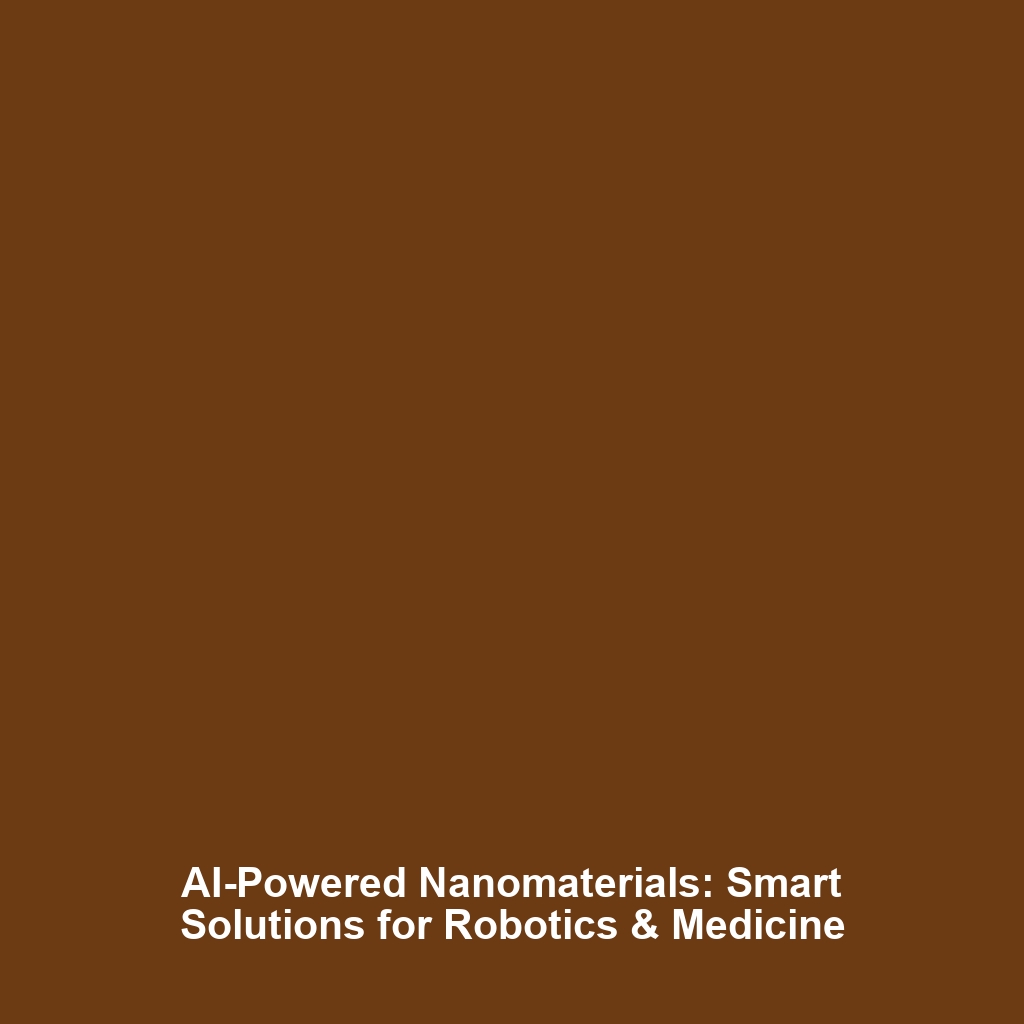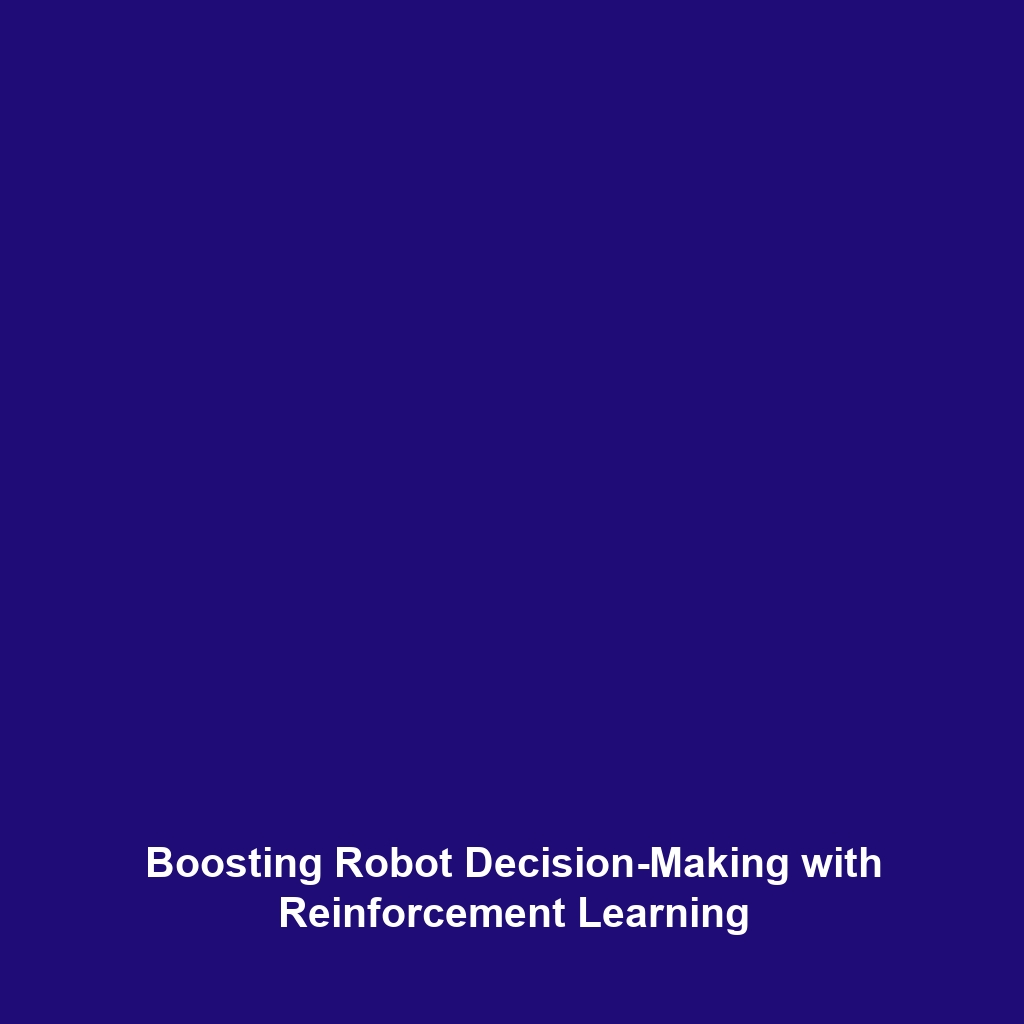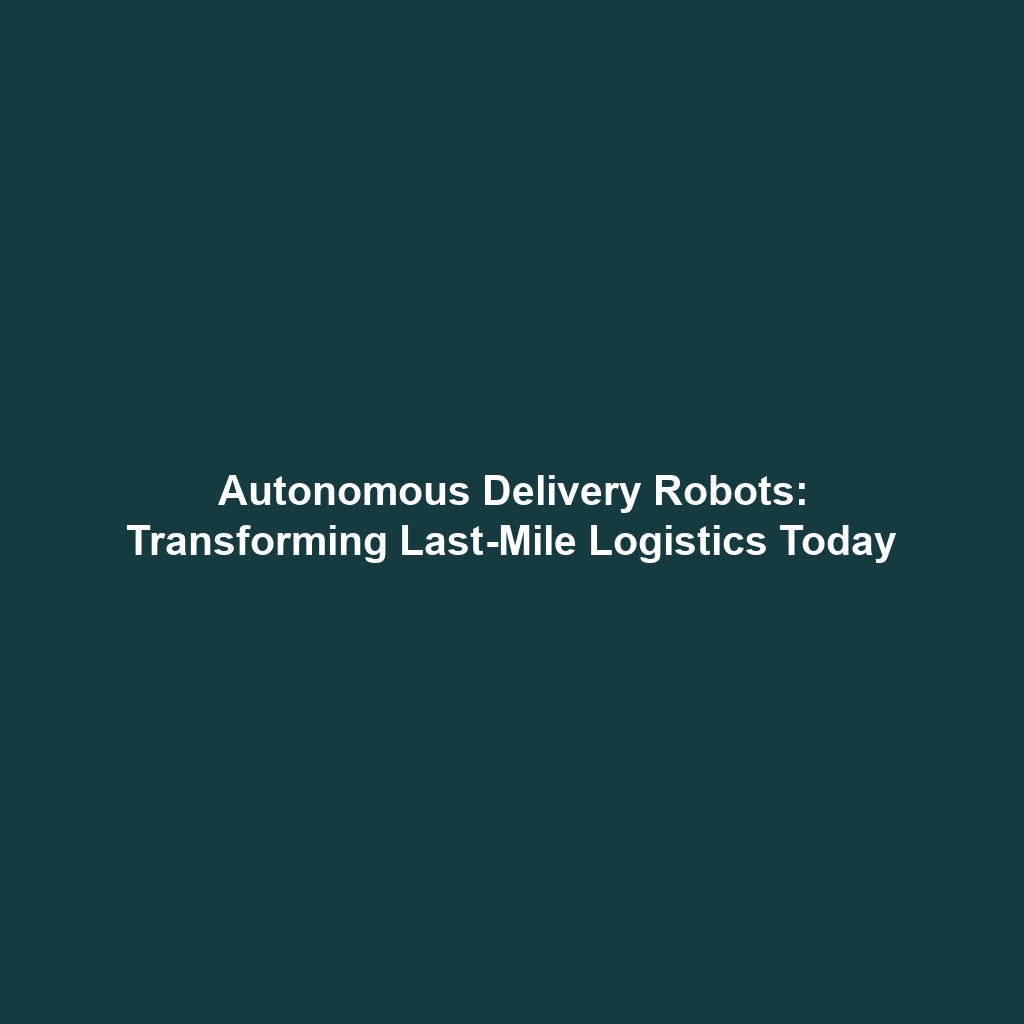Advanced Sensors That Help Robots Interact with Their Environment
Introduction
As the field of autonomous robots advances, one of the pivotal components fueling this progress is the development of advanced sensors. These sensors enable robots to perceive and respond to their surroundings with unprecedented precision and adaptability. Understanding how these sensors work not only underscores their significance in enhancing robot autonomy but also highlights their role in various applications, ranging from industrial automation to home assistance. The effective integration of these technologies marks a transformative leap in robotics, setting the stage for future innovations in autonomous systems.
Key Concepts in Advanced Sensors
Understanding Sensor Technology
Advanced sensors encompass a variety of technologies, including:
- LiDAR: Light Detection and Ranging technology employs laser beams to create detailed 3D maps of environments.
- Computer Vision: Using cameras and machine learning algorithms, robots can interpret visual data, identifying objects and navigating obstacles.
- Ultrasonic Sensors: These sensors use sound waves to detect objects and measure distances, ideal for navigating open spaces.
- Touch Sensors: Incorporating tactile feedback capabilities, allowing robots to interact physically with the environment.
These sensor technologies collectively enhance the operational capabilities of autonomous robots, allowing them to adaptively respond to changing surroundings.
Applications and Real-World Uses
The implications of advanced sensors in autonomous robots are vast and impactful. Here are some notable applications:
- Self-Driving Vehicles: LiDAR and computer vision allow for real-time navigation, obstacle detection, and traffic pattern analysis.
- Warehouse Automation: Robots equipped with ultrasonic and RFID sensors improve inventory management and order fulfillment efficiency.
- Healthcare Robotics: Advanced sensors facilitate patient interaction, monitoring safety, and providing assistance in hospitals and care facilities.
These examples illustrate how advanced sensors are used in autonomous robots, improving efficiency and safety across various sectors.
Current Challenges
Challenges of Advanced Sensors
Despite their benefits, several challenges persist in the deployment of advanced sensors for autonomous robots:
- High costs of sophisticated sensor systems, which can limit widespread adoption.
- Data overload, where an excessive amount of sensor data can overwhelm processing systems.
- Environmental factors, such as poor lighting or weather conditions, which can impair sensor functionality.
- Technological integration, ensuring different sensor types work seamlessly together for optimized robot performance.
Future Research and Innovations
The future of advanced sensors in the realm of autonomous robots promises numerous innovations:
- Development of hybrid sensors combining multiple technologies to improve environmental perception.
- Advancements in AI algorithms for better data processing and decision-making capabilities.
- Research into miniaturization of sensors, making them more accessible and affordable for widespread applications.
These breakthroughs are expected to further enhance the functionality of autonomous robots and make them indispensable in various sectors.
Conclusion
In summary, advanced sensors play a critical role in enabling autonomous robots to effectively interact with their environments. As technology advances, we can anticipate more sophisticated sensors that will further improve the capabilities of robots. To stay informed on this evolving topic, explore our related articles on the future of robotics and sensor technology developments.





